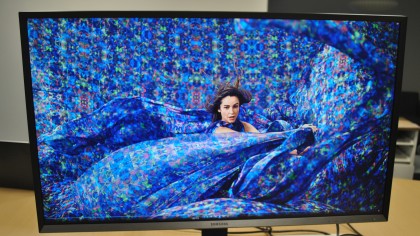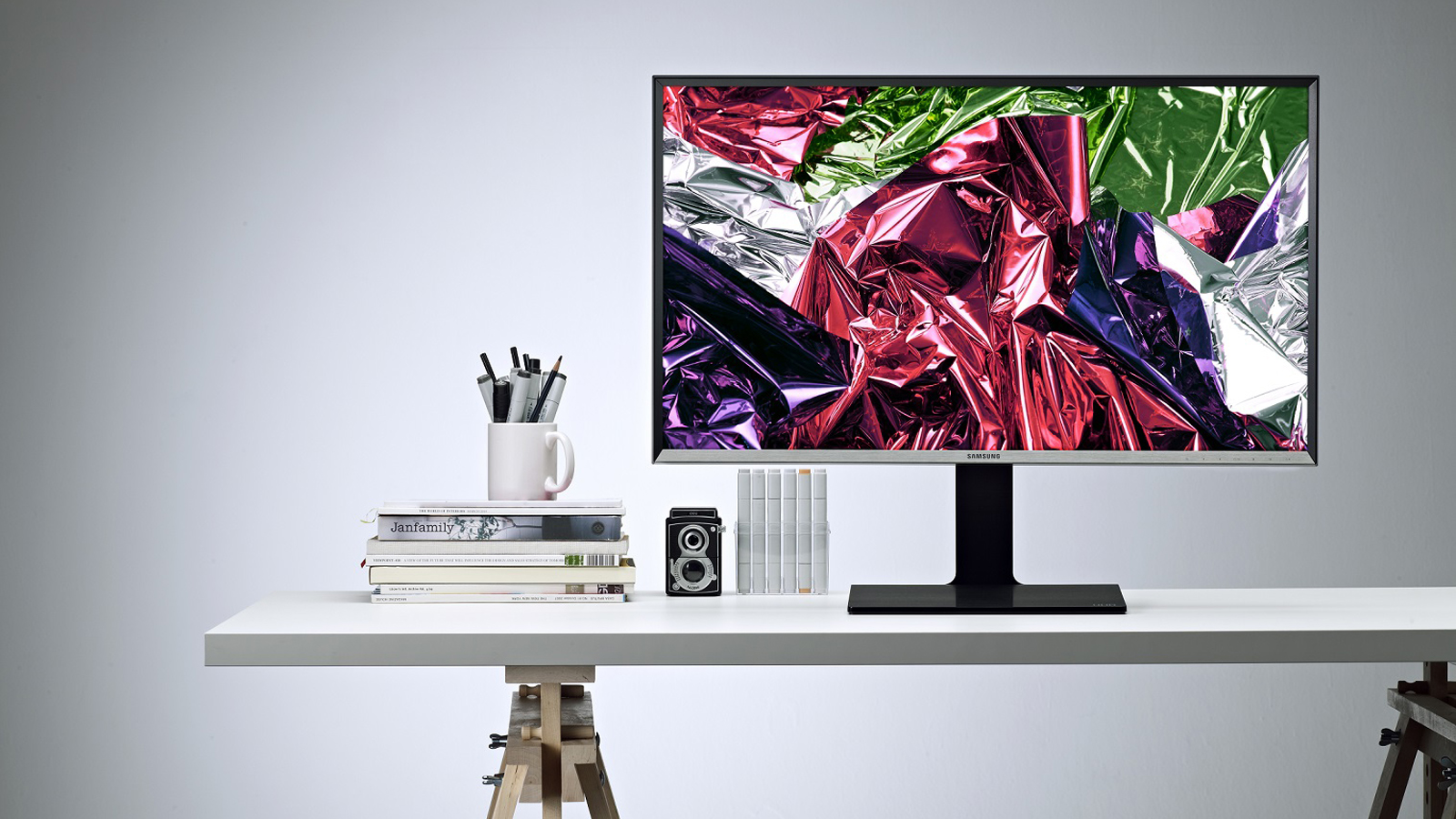TechRadar Verdict
A 4K display that's factory-calibrated for great color accuracy and image quality, which makes it ideal for digital designers, CAD/CAM engineers or videographers who aren't put off by the high-price tag.
Pros
- +
Color accuracy
- +
Simple, elegant design
- +
Landscape/portrait rotation
Cons
- -
"Picture By Picture" hard to configure
- -
Hardware button menu navigation
- -
Cost
Why you can trust TechRadar
In the past year, TechRadar Pro has reviewed several IPS 4K panel monitors (including the fabulous Asus PB287Q and the BenQ BL2710PT ) aimed at professional graphic artists and photographers. Most of these monitors are priced at $1000 (£600 or AU$1,075). These mid-priced monitors are often missing hardware calibration or full Adobe RGB support. If these features are necessary for your display, you'll likely pay significantly more money.
In comes the Samsung UD970 ($1,999.99, £1,200 or AU$2,150). This 31.5-inch 4K UHD desktop monitor is Samsung's top-of-the-line for home and small office use. It supports 4K 3840x2160 resolution and - unlike previously reviewed display units - comes with all the works.
What is UHD?
Ultra-high-definition (also known as Ultra High-Def, UltraHD or UHD) is the latest whiz-bang digital video format that all your graphic artist and visual designer friends will soon be lusting after, especially if you know a few with deep pockets (I don't).
UHDTV has two defined resolutions:
- 4K UHD (2160p), which is 3840 pixels wide by 2160 pixels tall (8.29 megapixels),
- 8K UHD (4320p) is 7680 pixels wide by 4320 pixels tall (33.18 megapixels), which is sixteen times as many pixels as the current 1080p HD screen you probably watch your favorite sports teams on now.
When choosing a flat screen LCD monitor you need to pay attention to what panel type it uses: either twisted nematic (TN), In-Plane switching (IPS) or Vertical Alignment (VA). Each panel type has its pros and cons, depending on what you plan to use your monitor for. TN-panel monitors are generally more responsive for first-person shooter games while those with IPS panels are usually better at reproducing colors for photography and design. VA panels generally offer better blacks and contrast than either TN or IPS panels, which makes them good for writers or people where contrast is an important factor. Photographers and graphic designers (unless you're working in the film noir genre) should stick to IPS monitors.
First things first
The UD970 has a simple and elegant design, with a large matte-finish screen surrounded by a thin bezel. Glossy flat-panel LCDs screens, such as the laptop display you're probably reading this review on, may look better when they're powered off but they're also more susceptible to glare, reflected light from windows and light bulbs. And glossy screens tend to show fingerprints and smudges more readily, which can be a problem if you're a habitual screen-pointer like me.

The thin mounting stand was adjustable in a range of different directions, which made it fairly easy to put the monitor in portrait or landscape mode. That capability, coupled with the fact that Samsung also provides Picture By Picture (PBP) support for up to four input sources at once, had me imagining using the UD970 in all sorts of cool multitasking scenarios, such as multiple work and play Google Hangout or Skype sessions with friends, family and co-workers in my own homegrown version of a Hollywood Squares tic-tac-toe game show. The reality for me, as you'll see later, was more Hoboken than Hollywood, since I ran into numerous configuration and installation hassles getting the PBP feature to work.
Sign up to the TechRadar Pro newsletter to get all the top news, opinion, features and guidance your business needs to succeed!
Equipment used
I connected the UD970 to a MSI GT72 Dominator, a high-end gaming laptop with a NVIDIA GeForce GTX 870M graphics card inside. My initial impression was that the color reproduction on the display was stunning, with high levels of color accuracy, picture quality and clarity. The fancy colors I was seeing are due to Samsung's factory calibration and some impressive color specs: its 10-bit color depth is capable of displaying more than one billion colors, 100% of the sRGB color spectrum and 99.5% of Adobe RGB. If you don't care for any of the eight factory calibration settings, there are three user-programmable modes you can play around with.
I especially liked the UD970's narrow bezel that allows the screen to come all the way out to the frame for better viewing, similar to the way an infinity pool gives you more real estate for swimming.
